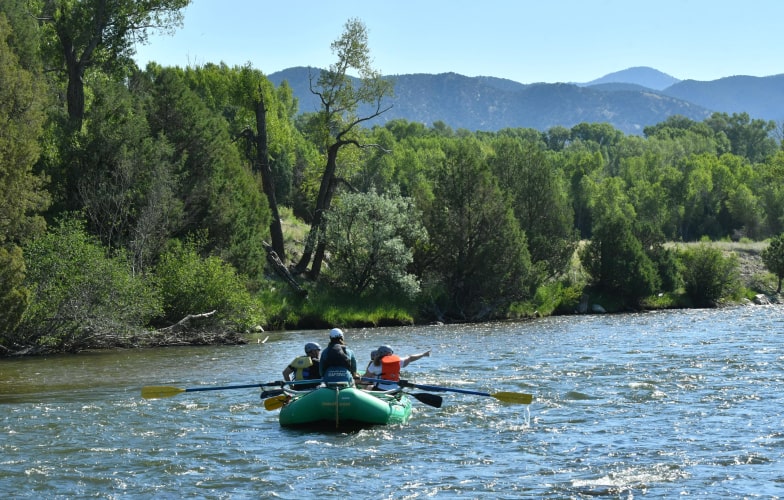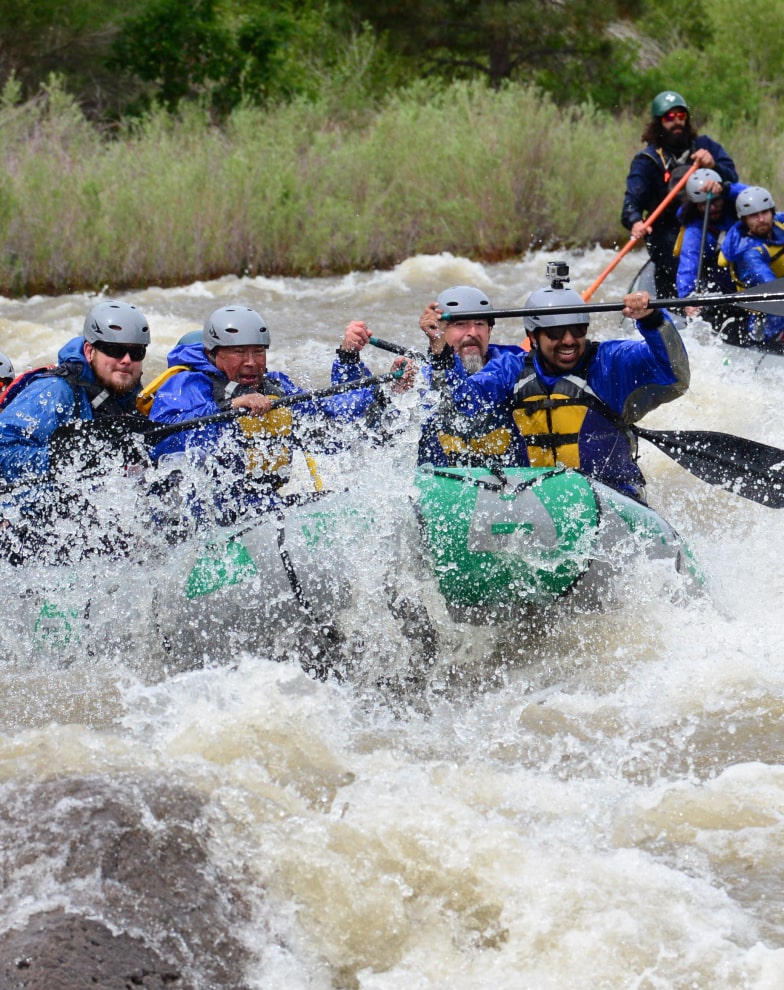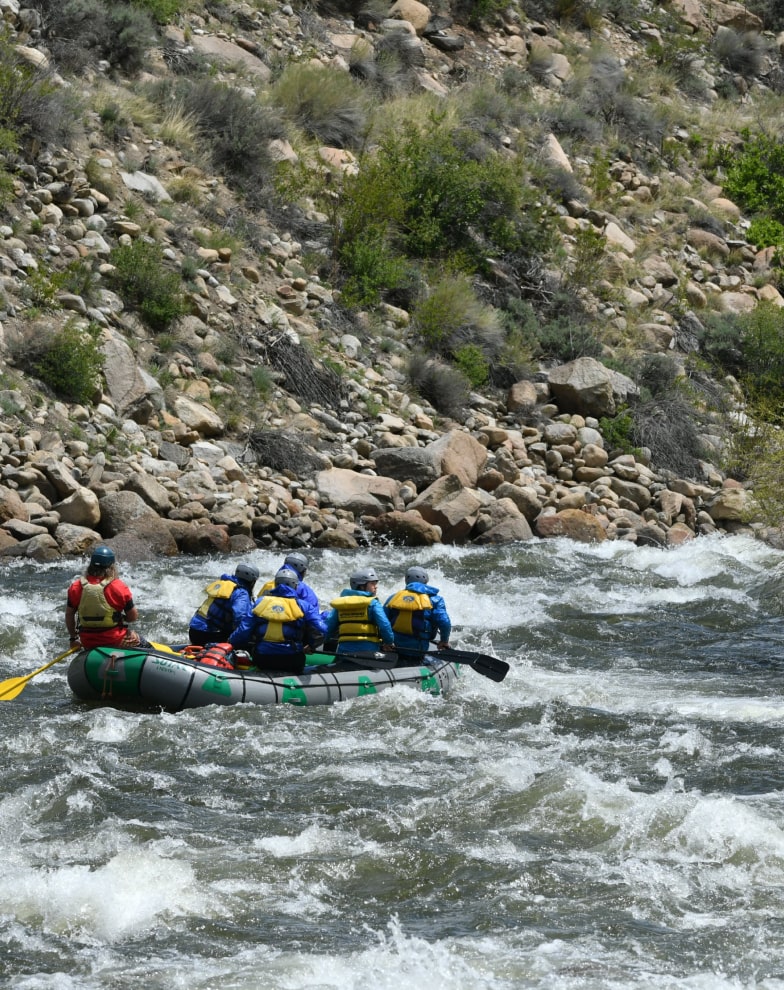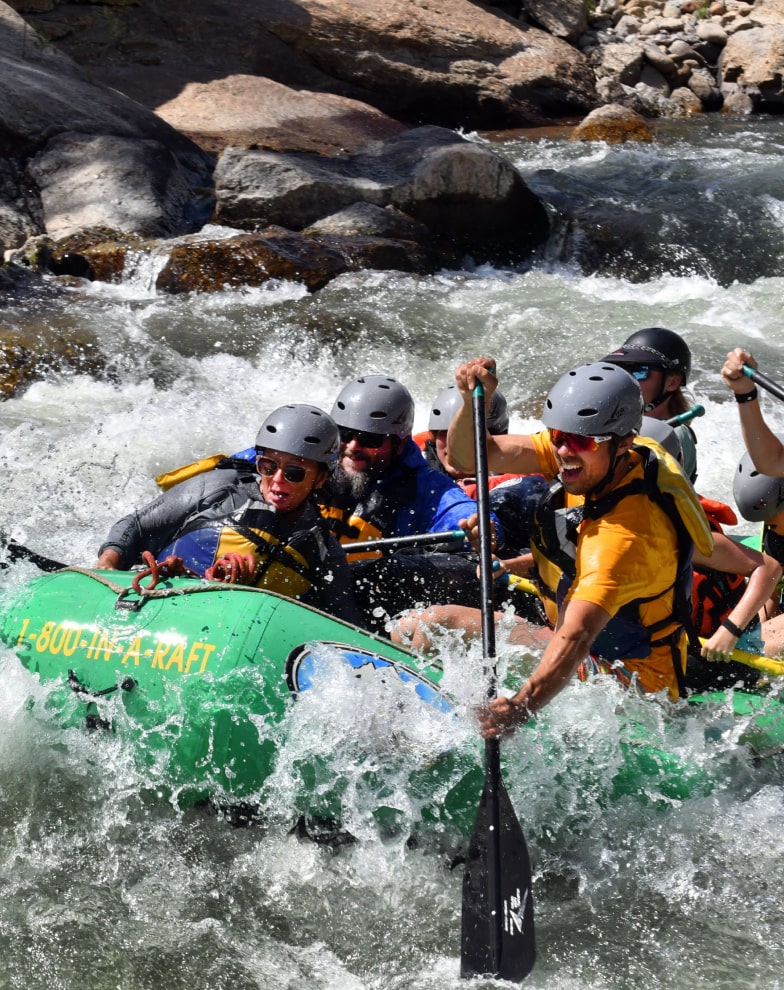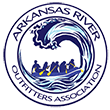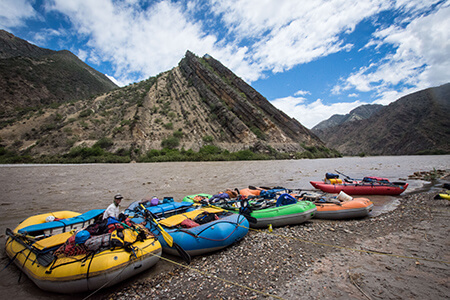
A truly free flowing river has a unique character. Those of us from the United States have seldom experienced a living river without dams, because almost every river in the United States has at least one dam on it. Intellectually, I knew there was a difference, but to experience it was a rare and wonderful treat.
A free flowing river has a life of its own. It breathes, it speaks, it has moods. The Rio Marañon has a distinct personality, that I enjoyed getting to know. I felt as if our presence in the company of this river was at its pleasure; the minute it didn’t want us there any more, we would be expelled. But the river was in an indulging mood while we were there. It was powerful yet playful, dynamic yet forgiving.
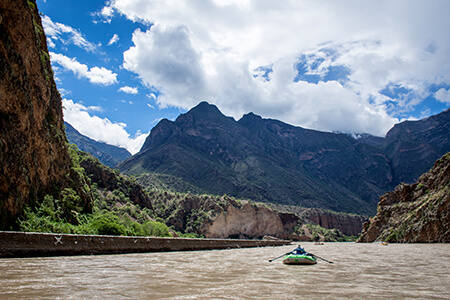
Like the Grand Canyon of the Colorado in Arizona, the river has miles of relative calm and continuous stunning scenery. Life moves at the river’s pace, which is deceiving, because although it may be calm and serene, a glance at the shore will show you that the boats are moving along at a good clip. We were there at the beginning of the rainy season, the equivalent of June in the northern hemisphere, and the river rose as our trip progressed. Each day we seemed to effortlessly cover more and more mileage. On December 30, for example, we floated ten kilometers in 28 minutes! An inevitable feature of all rivers at one time or another is upstream winds, and we had a few afternoons when the wind was rather fierce. But the current flowed so strongly that if we sank our oar blades into it, our rafts would be carried downstream despite the blowing gale. For me, after years of running rivers, that was a unique experience.
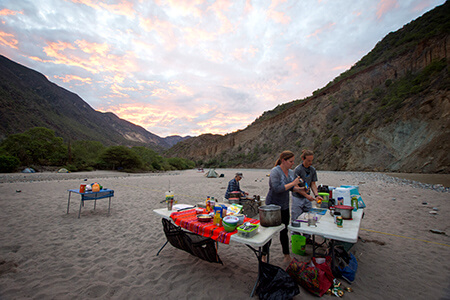
But the Rio Marañon also has many rapids, and those rapids stand in stark and powerful contrast to its calmer sections. On other large volume rivers I have experienced, there is usually an area where most of the current concentrates to form a smooth tongue at the rapid’s entrance. While scouting a rapid, you locate that tongue and begin making your plan to negotiate the rapid based on where most of the current is going. Often, a defined wave train is present where the waves build and break downstream, one following the next. But the Rio Marañon was different. Not one of the rapids had a smooth tongue of current to orient us. Instead, we were greeted by a maelstrom of waves from bank to bank, building and breaking in every direction—from either shore and at every angle all at the same time. The goal of the scout became to find the gigantic recirculating holes, walls and other obstacles that must be avoided at all costs, and then chart a course downstream, taking the waves as they came. The running of the rapid was a chaos of crashing waves, hitting the boat from every side; the aim was to hit the biggest ones straight and brace for the others. And for me, it was all about riding the bow and high-siding every wave I could. We often stood our 16-foot raft up on end as we rode over the crest of one wave and accelerated down into the trough behind it, only to be broadsided by another wave at the bottom before riding up another wave in a different direction. What a ride!! The lack of coherent behavior of the waves was exhilarating, and I had the distinct feeling that the river was playing with us like a cat batting at a mouse. The power of the water was intense, and yet it let us go, spluttering and whooping and unscathed every time. Perhaps the river knew we were on its side, and wanted to show us its best face.
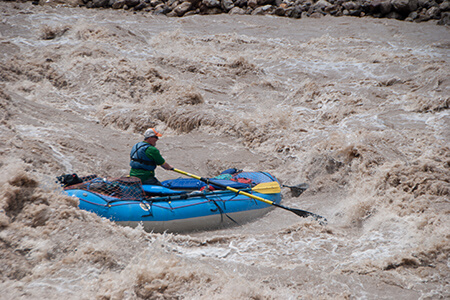
I know I am being anthropomorphic, giving the river a personality and imbuing it with intention toward us, but there is something about a river that feels like a living entity, and as humans we seek to interact with and understand that life by drawing parallels between its existence and our own.
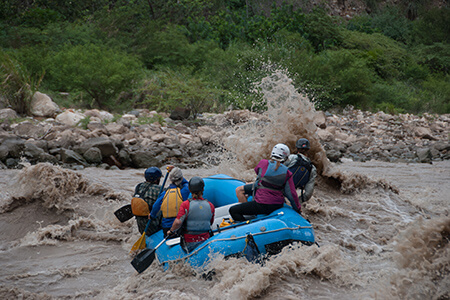
Beyond the anthropomorphism, there are many characteristics of the river that defined its ‘personality’. Besides the unique character of its rapids, the river level rose and lowered several times during our two-week trip. After a few days on the river, it began to get siltier and we began to see tree trunks and other debris riding the current with us. Several times we saw sand banks along the shore give way into the current carrying entire trees with them. Several nights at camp the river rose or dropped several feet. The river became increasingly silty and gray-brown, but not sandy; there was no scratchy grit to it, just a smooth siltiness. Another feature that I can’t remember noticing elsewhere was that we could often hear rocks rolling along the bottom of the river. There was the hiss of the silt in the current, but also good sized rocks clacking into each other as they rolled along the riverbed—a fascinating sound.
And then there were the eddies. As the river rose, the eddies boiled. By boiling, I’m referring to their action, not their temperature. The river was cool but not cold throughout the trip. But the eddies changed character as the river came up. As one might expect, the eddy currents swirled upstream along the shores stronger and stronger as the water level rose, and it was hard to escape their grasp once they took hold of a raft or kayak. But that was not the only way they changed. In addition to currents that ran upstream on the surface of the water, the eddies also developed vertical currents that pushed up from the river bottom, seeming to boil up in massive domes in one place, then sucking back down in whirlpools in others. Our boats danced and pirouetted along the seams of these contradictory currents as we floated along, so that even the calm stretches of the river were interesting and demanded the oarsman’s attention.
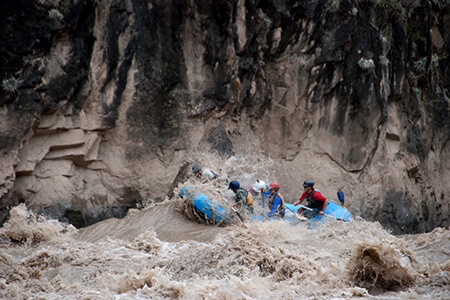
Along the shores of the river, the canyon scenery progressed from sparse trees and giant cactus to denser and denser growth. Where gargantuan geologic folds the size of entire mountains stood on end for our examination early in the trip, later they were more hidden by the trees and bushes, with the occasional evidence of a dramatic red-soil landslide to remind us that this canyon is not static, but continues to evolve. Birds chirped and chattered from the trees, and always the blue-green folds of mountains rolled back and back from the shores to the distant cloud-crested summits.
The river rose so much by day nine that we weren’t able to stop to scout most of the rapids because the beaches and scouting trails were becoming submerged. Pedro would tell us where not to go, and we would ride the waves as they came at us. We camped on a small remnant of a beach on day nine, setting up our tents in the dense forest of a farm, where singing insects and spiders caused a few to decide to take their chances with the rising water on what was left of the beach.
The one constant on the river was change. This free flowing river had a life of its own that can’t be experienced on a river subdued by dams. The Rio Marañon is a unique and rare gem among rivers. Long may she flow.
To raft and/or help protect the Rio Marañon, contact SierraRios at www.sierrarios.org.
Read more entries in our ten-part series about the Rio Marañon.
